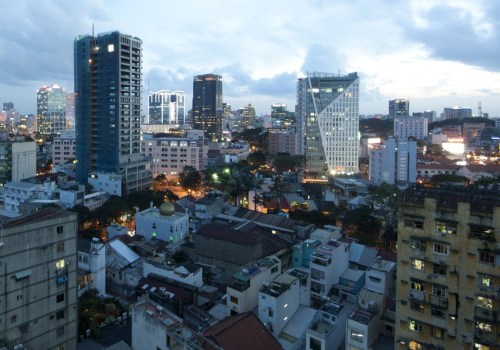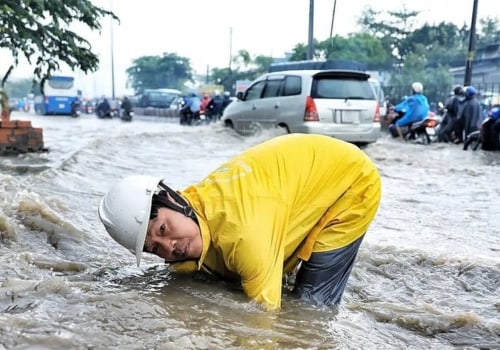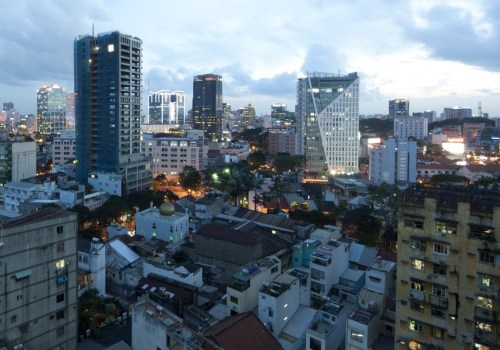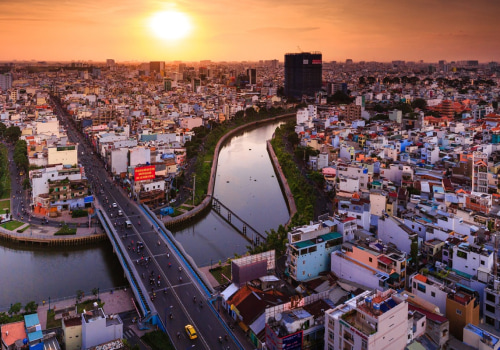Ho Chi Minh led a long and successful campaign to make Vietnam independent. He was president of North Vietnam from 1945 to 1969, and was one of the most influential communist leaders of the 20th century.
Ho Chi Minh
City (also called Saigon) is famous for its pho (traditional Vietnamese noodle soup) and pork rolls. Often the best places are shops and stalls that bear the names of family members, such as Aunty or Chi (meaning sister) followed by a number representing their order in the family and, finally, their name.Although many chains, such as Pho24 and Pho 2000, do big business today, you can't beat family sets because of the real deal. It's been almost 45 years since this city appeared on our television screens every night, but under a different name. Formerly known as Saigon, Ho Chi Minh City was renamed after the late North Vietnamese leader shortly after the end of the Vietnam War, although many people, including Vietnamese, still use the old name. Fortunately for visitors, most of the main sites of interest are located in a relatively small area (District 1 - Quán) in the city center, making them easily accessible on foot.
Here are nine reasons to spend time in Ho Chi Minh City. The palace is located at the southern end of a wide avenue with French-influenced architecture. An earlier palace on the site was home to French administrators, later renamed the Palace of Independence after France left. It became the home and offices of the presidents of South Vietnam.
The current palace was built between 1962 and 1966 to replace the old one that had been severely damaged by Viet Cong shelling. After the end of the war, it was officially renamed the Reunification Palace, but both names are still in common use. A short walk north of the Reunification Palace is the famous Cathedral Basilica of Our Lady of the Immaculate Conception, better known as the Cathedral Basilica of Notre-Dame de Saigon. Built between 1863 and 1880, when Vietnam was colonized by the French, this cathedral stands out for the iconic statue of Mary on its east side.
Right next to the cathedral is another well-known Saigon attraction, the Saigon Central Post Office, built just 6 years after the cathedral. Other area attractions include the Ho Chi Minh City Museum, located in Gia Long Palace, east of Independence Palace. This was the house of the presidents when the Palace of Independence was being rebuilt. Museum of Ho Chi Minh City (Gia Long Palace) Also in District 1 is the famous Ben Thanh Market, formally established in 1859, but on the site of informal markets dating back another hundred years.
The current building dates back to 1912, but it has been restored. Guests at the restaurant Quán Ngon 138 Bespoke itinerary & prompt response within 24 hours. The cathedral is designed in neo-Romanesque style and here you can see the towers, which rise to a height of 40 meters and are topped with impressive iron spires. The Mekong Delta is made up of 39,000 square kilometers of waterways and is also one of the most densely populated parts of Vietnam.
The market was built in the 1880s during the colonial period and here you can take a walk and try the food stalls. The temple dates back to 1902 and is covered with ritual brass ornaments as well as antique weapons. The temple is located near Lake Dam Sen and was founded in the 18th century. You will not know the true meaning of claustrophobia until you have visited this vast network of interconnected underground tunnels, 30 kilometers from Ho Chi Minh City.
The War Remnants Museum is one of the most moving places in Ho Chi Minh City and is dedicated to educating visitors about the atrocities of the Vietnam War. Only a few of the collections on display include pottery, ancient maps of the city and wedding costumes belonging to the various ethnic groups of Vietnam. Watch the city lights at sunset as you take a Tom Collins from the deck of a traditional 19th century dragon boat, watch a show and enjoy a buffet meal in style. Rebuilt by the French, it's still a functioning post office, but it's more of a tourist attraction with its souvenir shops and cash-exchange facilities.
You can also buy items such as local textiles and ceramics, although keep in mind that haggling is expected, so don't be afraid to bargain hard. US-backed South Vietnam refused to participate in elections, fearful that Ho would win. The soup is made with broth to which the noodles are added and you can choose from a variety of ingredients to customize the dish. From the air force to infantry and chemicals, the weapons used in the Vietnam War were more devastating than those of any previous conflict.
However, it was noted that in the first Congress of the Democratic Republic of Vietnam, more than two-thirds of its members came from non-Việt Minh political factions, some without elections. The bombing of Haiphong by French forces in Hanoi only strengthened the belief that France had no intention of allowing an autonomous and independent state in Vietnam. However, the nation's freedom was short-lived, as the French sought to reaffirm their colonial rule over Vietnam after World War II. A visit to Ho Chi Minh City is an encounter with exotic food, French colonial architecture and memories of the war, writes Guy Wilkinson.
This is a big place, which houses parts of everything related to the war with France and then to the Vietnam War, with the story told by the side of the winner. In the north, in the rural suburbs of Ho Chi Minh City, is the CChi Tunnel Complex, used by the Viet Cong as its hidden headquarters and supply routes during the Vietnam War. Two to three hours by car from Ho Chi Minh City, you will arrive at the Mekong Delta, Vietnam's important agricultural warehouse. .
.




